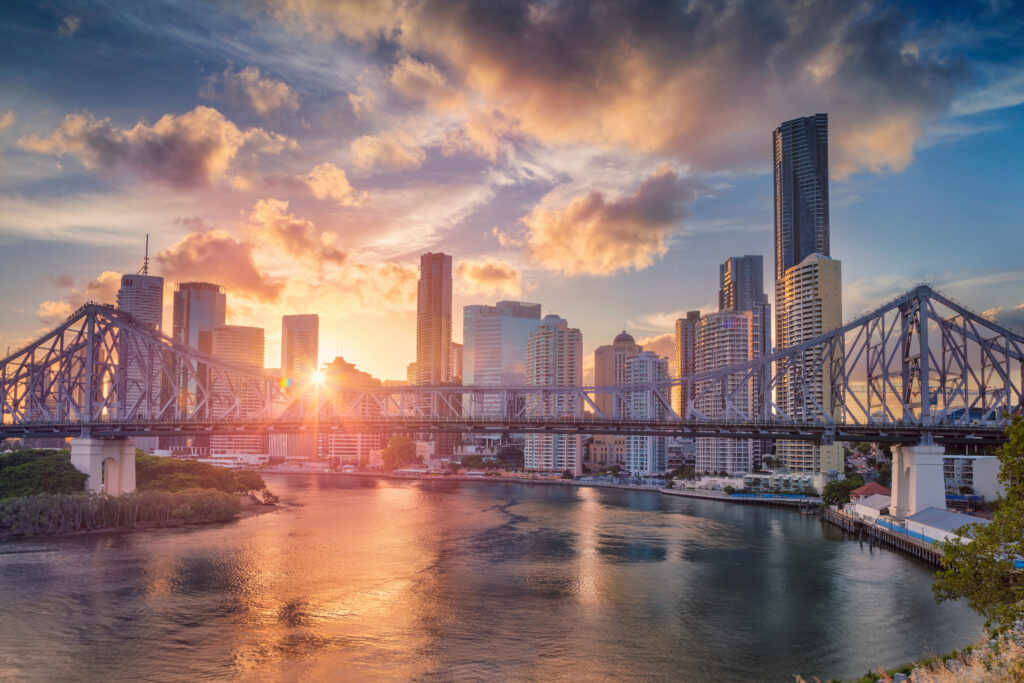
Joel Davis,
Strategic Director at Image Property.
Behind Brisbane’s biggest-ever infrastructure project
By Joel Davis, Image Property
As you read this, two enormous figures are making a significant mark on Brisbane that will transform the face of the inner-city for generations to come.
I’m talking about Merle and Else, the tunnel-boring machines currently smashing through about 30 metres of hard rock each day as part of works on the much-anticipated Cross River Rail project.
The first, Merle, passed beneath the Brisbane River last month, marking an important milestone.
Sure, it’s still a few years until commuters will fill the trains that hurtle them along a 10.2-kilometre line from Dutton Park to Bowen Hills, but that doesn’t make the eventual impact of this major piece of infrastructure any less exciting.
And I’m not just talking about the faster trip to and from work.
Construction roaring ahead
For a long time, it felt like Cross River Rail would be one of those projects that were talked about for years and years but never came to fruition.
So, to witness the rapid progress being made on the twin tunnels is a relief for all of those who feared it might never get off the drawing board.
The $5.4 billion project consists of the 5.9 kilometres of twin tunnels beneath the city, forming part of a total of 10.2 kilometres of the rail line, from north to south.

It will build four new subway style stations at Boggo Road, Woolloongabba, Albert Street and Roma Street. Eight surface-level stations will also be upgraded as part of works – Dutton Park, Salisbury, Rocklea, Moorooka, Yeerongpilly, Yeronga, Fairfield, and Exhibition.
It’s also a very integrated piece of transport infrastructure, connecting with the council’s Brisbane Metro bus project at Boggo Road and Roma Street.
When complete and functioning, Cross River Rail will eliminate a rail bottleneck in the city, caused by having just one single river crossing that dramatically limits capacity, making getting around on public transport easier and quicker.
This project isn’t just about convenience – it’s about alleviating pressure on an overstretched transport system by adding an extra 18,000 train seats.
Given South East Queensland’s population is tipped to nudge five million in 15 years’ time, it couldn’t come soon enough.
The benefits to commuting times are just the beginning, with the transformation of several pockets also expected.
Several suburbs set to benefit
Big transport projects like these bring about new waves of development and urban renewal, sparked by a greater ease of access to pockets of cities that were cut off or choked by congestion.
Think new residential projects that draw more residents – and a broader demographic of people – into an area, plus cafes, restaurants, and bars to cater to a growing population base.
Also, think improvements to streetscapes and general visual amenity, more thriving and vibrant communities, and the potential for highly desirable village-style neighbourhoods to flourish.
And, of course, think rising property prices as that gentrification intensifies and sparks an uplift in real estate demand.
So, which areas will get the lion’s share? Obviously, the suburbs that will call a new Cross River Rail station home. Not only will it let current and future residents get around more quickly, but it will also allow visitors to access these pockets and their eventual amenities and facilities.
Each of the new stations will be high-capacity and help to fuel urban renewal and development in what are prime inner-city growth locations but largely haven’t fully met expectations.
For too long, Dutton Park has been a kind of lost soul in the scheme of things, being a stone’s throw from the city and surrounded by world-class medical, education and science infrastructure, but never quite realising its huge potential. This is all set to change.
Similarly, Boggo Road, just down the road, needs an electric charge to get its next era going, and Cross River Rail is just the ticket.
Of course, the new interchange at Roma Street is especially exciting, seeing the revitalisation of what one politician described as being “the ugliest building in Brisbane” – the now-demolished Transit Centre.
As well as the crucial transport cog, this precinct will also be home to a 17,000-seat live entertainment venue.
It’s another step forward in bringing to life a dormant and underutilised part of the CBD. Likewise, at the other end of the CBD, the Albert Street station will also bring to life what’s currently a sleepy and disconnected pocket that is crying out for something to help propel it forward.
And Woolloongabba, while already a very active part of Brisbane, could use a project that takes a bit more of its old but still evident, light industrial edge off.
Savvy home buyers and investors could also look to the areas immediately surrounding suburbs getting a Cross River Rail station, given the ripple effect typically caused by gentrification.
And those suburbs getting above-ground rail station upgrades as part of the project will likely also see a flow-on effect thanks to improved access and new connectivity.


